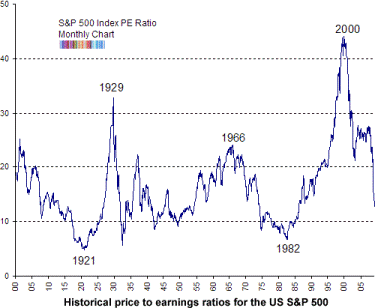A New Model of Finance Regulation

How would The United States of America score under a Financial Markets Risk Index?
In the same essay that I mentioned in my last post "Advocating a Financial Markets Risk Index", Manne turns to the erstwhile darling of the markets, Alan Greenspan, observing that Greenspan, the chief regulator of the US financial markets and indirectly of the whole US economy, was such a blind believer in the ideology of the market that he could see no need to regulate derivatives, including, of course, the type of instrument that triggered the subprime crisis. A competent regulator should not be driven by ideology or fear or self-interest, noting that the class of people who most benefit from investment bubbles is the same class from which regulatory positions, high and low, are filled. In the absence of international standards, I will substitute my own judgment here and, because of the intrinsic flaws in the US regulatory regime and because of the track record of regulators, I conclude that it is likely that the American regulator(s) would fail against many of the requisite elements of competence. To be charitable, I might give a rating of 20 from 100 possible points, rather than fail them altogether.
Next is the level of sophistication of the market's soft and hard infrastructure. US markets are highly developed and sophisticated, if one considers the very broad range of products traded there and the plethora of companies and advisers that populate that market. However, the profession of financial adviser in the US seems to have come a cropper in recent years, behaving like a flock of sheep, rather than like leaders should. Again, in the absence of accepted standards, I will substitute my own judgment, assigning good marks for the hard infrastructure and poor marks for the soft, adding up to 60 in the total, made up of 40 from 50 for the former and 20 from 50 for the latter.
The level of deviation of the market from established measures, such as price to earnings ratios, for example, would have registered off the scale in the lead up to the subprime crisis, as shown by Professor Shiller (see figure below), but was falling sharply by 2006, reaching a level of twelve or thereabouts. A study by Professor Jeremy Siegel, of Wharton, has concluded that US stocks are fairly priced at an average price earnings ratio of about fifteen times earnings.[1] If we were to assume a level of twelve, we would score the market as being on the positive side of risk, perhaps producing a rating of 60 out of 100, noting that in previous periods twelve was a point struck on the way down to even lower levels. Please note that I am not proposing here that the FMRI would rely on price to earning s ratios only; we will need something more sophisticated than this, preferably relying on research that identified solid, reliable, indicators. I am doing what I am doing here to illustrate my point, not to produce a working index.

The stability of the host economy also would need to be gauged by reference to a composite basket of indicators. However, it is likely that the USA would score well here, with the major flaw being the high level of debt, especially to China. Perhaps we could be a bit generous here and assign a score of 70 from 100. Next, we judge the level of competence of ratings agencies, again in the absence of established standards. The consensus reached by commentators is that ratings agencies have performed abysmally, so let's say 20 from 100 points for this item. Then we look at the medium-term trajectory of the host economy. To keep things simple, here I will use trends in productivity, assuming that if productivity is not rising, the economy is likely to slow at some subsequent point. The signs have been around since 2006 and 2007 that US productivity was slowing.[2] Let's give the US a score of 50 from 100 here. Lastly, we are assessing the level of sophistication of the host civil society. Here the US does especially well, thanks to its strong media, its commitment to freedom of speech, of assembly and so on. My suggestion is that we use the Freedom Index here, published by Freedom House annually. In 2008 the USA was rated as free (with many other countries) and the consequence is a score of 100 from 100. Again, please note that I am using this index to illustrate a point. If I were to look at freedom of the press alone, for example, the USA ranked only 36th in the world in 2008, according to Reporters Without Borders.
What does all this add up to? It adds up to 380 from 700, which is equivalent to about 54.3 from 100. Without a normative framework, this is not very meaningful. To provide a comparison, next week we will rate Australia.
[1] "Equity Risk Premium Forum, November 8, 2001" , Historical Results I, Jeremy J. Siegel, Wharton School of Business, Philadelphia, Summary by Peter Williamson, Amos Tuck School of Business Administration, Dartmouth College.
[2] "US Productivity Growth", Willem Buiter, 10 August 2007, from FT.com, retrieved on 25 March 2009.
___________________________________
Patrick Callioni is a former senior public servant, with the Queensland and Australian Governments, and is now the Managing Director of consulting company, Enterprise Intelligence Pty Ltd, which specialises in helping business to do business with government and vice-versa. www.enterpriseintelligence.net.au His book Compliance Regulation and Financial Services is available at Amazon







